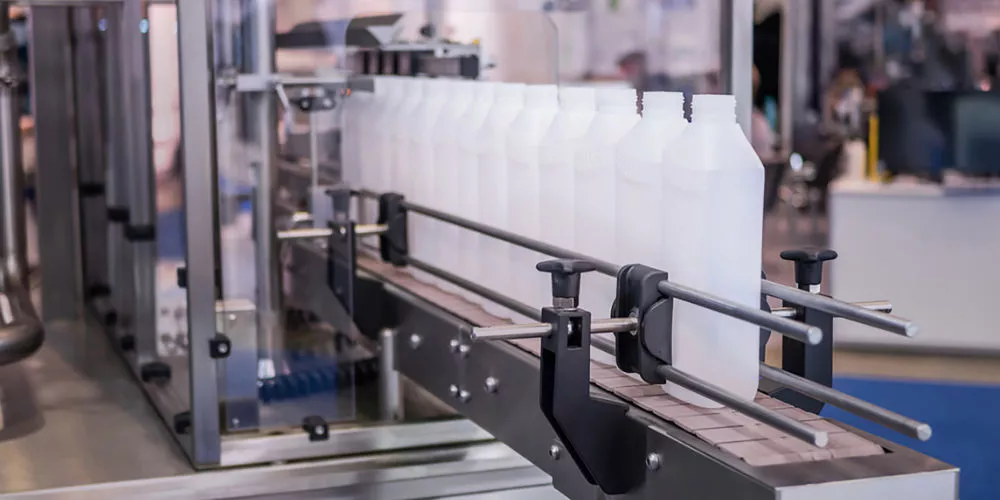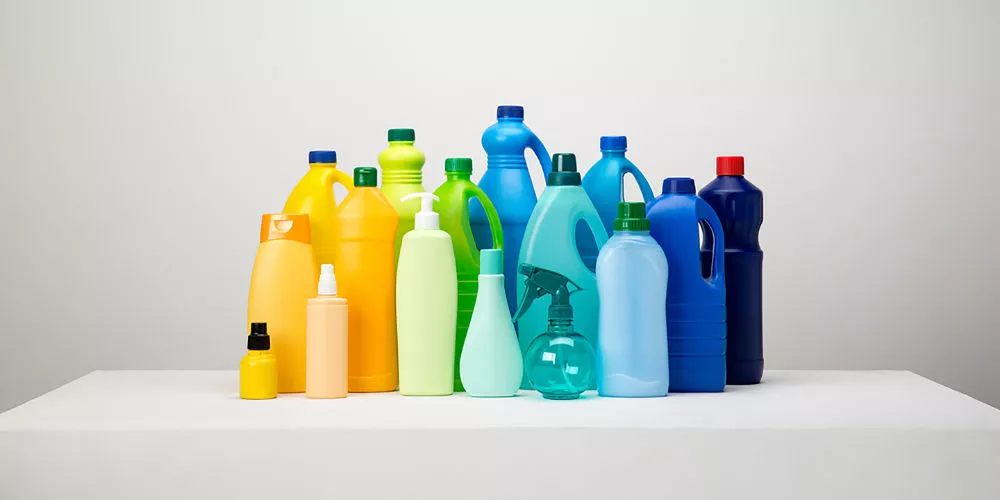Plastic blow molding is a process to create hollow objects made of plastic in the plastic manufacturing industry. This process uses heated plastic which then is blown into a mold cavity to create an open object under pressure. Firstly, raw plastic will be heated, which will be formed into a parison. Secondly, the plastic parison is secured to the top of the mold. Lastly, air will be blown down onto the plastic partition so it can stretch the interior walls of the mold cavity. Once the plastic has cooled down and hardened, the mold would open up to eject the part. Commonly, manufacturers use an already formed mold piece to make the manufacturing process more manageable.
Blow molding is an efficient way to manufacture hollow plastic parts, such as bottles and containers. Generally, there are three kinds of plastic blow molding methods:
1. Extrusion Blow Molding
Extrusion blow molding is a method that’s widely used for plastic blow molding manufacturing. In this method, molten plastic material will be extruded into a parison. The parisons are extruded continuously in continuous extrusion blow molding, and the individual parts are cut separately using a fitting knife.
2. Injection Blow Molding
This method is commonly used for hollow glass and plastic products manufacturing on a large scale. In the injection blow molding method, the core pin plays a key role as it rotates to a blow molding station to be stretched and cooled. It is commonly used to manufacture small medical and single-serve bottles.
3. Injection Stretch Blow Molding
This plastic blow molding method is parted into two different single and double stages. This method uses the same machine to perform manufacturing and bottle-blowing. The injection stretch blow molding method is specifically effective to create forms of plastic bottles, which then will either be sold to bottling companies or used to manufacture bottles.
The Process of Plastic Blow Molding
There are eight essential steps in the plastic blow molding process, as mentioned below:
1. The Feed from the Extruder
The first process is to heat the plastics up to be melted with an extruder machine which consists of cylinders and barrels. Into the blow molding machine, the feed from the extruder will be given as input.
2. Melted Plastic
The melted plastics will be the medium for the plastic hollow components creation.
3. Extruder Head
In order to pass through various other channels, the melted plastics have to be sent to the extruder head.
4. Airtube
The air tube is used to pressurize the air when the melted plastic enters the mold cavity and it is about to bulge.
5. Parison
It is a tubular shape of hot plastic with a hole at one end through which compressed air can pass.
6. Mold
The mold cavity consists of patterns where molten plastic is to be deposited and solidification takes place after solidification, the final product is obtained.
7. Air Pressure
When the molten plastic enters from the parison into the mold cavity, air pressure is forced into the cavity such that the molten plastic touches the mold corners and thereafter solidification takes place.
8. End Product
Finally, the end product is obtained after the solidification.

The Pros of Plastic Blow Molding
There are advantages to using plastic blow molding methods, as follows:
Cost Effective
Blow molding uses a lower pressure level, which means that the machinery costs will be cheaper. As the manufacturing process is mainly using technology, it can also reduce labor costs. The external threads or open-ended and large parts molding can be split by opening a closed molding to make it easier and more cost-effective.
Fast Production Rate
Plastic blow molding methods allow you to increase production capabilities significantly then manufacturers can produce greater quantities in just a short period of time. Because the machines allow 3D molding, it has quickened the production rate.
Possible to Manufacture Complicated Parts
Most of the plastic containers on the market that held some form of liquid had gone through the plastic blow molding process. These machines allow engineers to try and explore many interesting plastic designs and complicated parts.
Recycling is Possible
The waste from the plastic blow molding process can be recycled into various new products because it’s a very flexible plastic.
Offers the Benefits of Automation
The automated production method allowing minimal flash around the material due to the Placo X-Y machine was developed and gave rise to 3D blow molding in Japan.
The Cons of Plastic Molding
- The complex geometry of the components is difficult to manufacture with good dimensional accuracy.
- Thick parts can’t be manufactured.
- It can result in non-uniform distribution, non-uniform compaction of the film, and overall low dimensional accuracy if the mold has a complex shape.
- It comes with minimal applications, as it can only be applied to hollow parts only.




